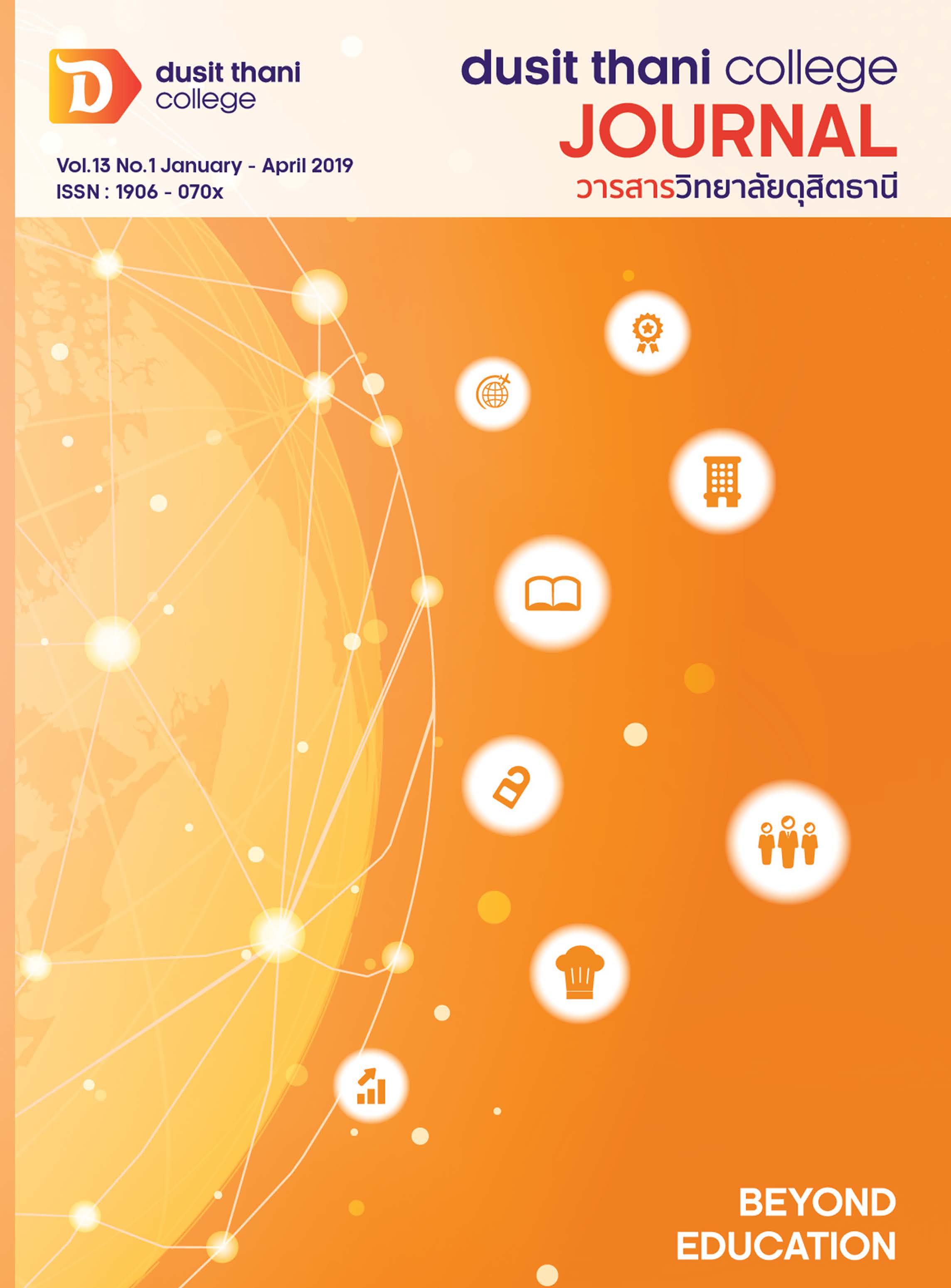Effects of Thai School Lunch Recipes on Nutritional Status of School Children: A Case Study of Schools in Nakhon Nayok Primary Educational Service Area Office
Main Article Content
Abstract
This research aims to explore the effects of developed Thai school lunch recipes on nutritional status of school children. The studied group was selected from students grade 4 - 6, 131 schools which in Nakhon Nayok Primary Educational Service Area Office The participants were 694 students, 364 boys and 330 girls using multi-stage random sampling method. The data about nutritional status of the volunteers were collected before and after consumed the meal prepared based on developed Thai school lunch recipes for 3 months. The data collected before the meal was compared with that collect after the meal in accordance with each category of nutritional status and was statistically analyzed with Paired Samples t-test at the confidence level of 95 percent. The results of all categories of nutritional status shows that the weight, height and muscle mass of both boy and girl subjects increase at a statistically significant at level .05 while the amount of fat in former subjects decrease at a statistically significant at level .05. It can be concluded that the developed Thai school lunch recipes improve the nutritional status of the students, so schools may further adapt these recipes for solving problems of malnutrition in their students.
Article Details
Article Screening Policy
- All research and academic articles to be published must be considered and screened by three peer reviews in the relevant field / article.
- All articles, texts, illustrations and tables published in the journal are the personal opinions of the authors. Editors don't always have to agree. And no responsibility whatsoever is the sole responsibility of the author.
- The articles to be published must never be published. Where did you first publish? And not in the consideration of other journals If the audit found that there has been a duplicate publication It is the sole responsibility of the author.
- Any article that the reader sees as being plagiarized or impersonated without reference. Or mislead the work of the author Please let the journal editor know it will be your greatest blessing.
References
Atzaba-Poria, Mary M. McFerren, Elena L. Serrano, Nutrition Comparison of Packed and School Lunches in Pre-Kindergarten and Kindergarten Children Following the Implementation of the 2012 -2013 Nationl School Lunch Program Standards.
Journal of Nutrition Education and Behavior 46(6), 2014.
2. Boonju, Wassana. (2008). Nutrition Education to Encourage School Children’s
Behavior on Thai Food Consumption., Master’s Degree Thesis. Kasetsart University.
3. Chulakarangka, Siripun. (2012). Basic of Nutrition. 8thed. Bangkok: Kasetsart University Press.
4. Dangubon, PImporn. (2007). Flavonoid Content and Free Radical Scavenging Activity
of Herbs Commonly Used in Thai dishes. M.E. Thesis, Mahidol University.
5. Department of Disease Control. Ministry of Public Health. (2011). Excessive Sodium. Excessive & Imbalance Consumption. 1thed. Bangkok: Office of National Buddhism Press.
6. Department of Disease Control. Ministry of Public Health. (2016). Annual Report 2016.
1thed. Bangkok: WVO officer of Printing Mill Press, The War Veterans Organization of Thailand under Royal Patronage of His Majesty the King.
7. Department of Health. Ministry of Public Health. (N.p.). The Growth of Target Group
(Age 6-19 years old). Bangkok.
8. Department of Health, Ministry of Public Health. (2003). Dietary Reference Intake for Thai People 2003. 3thed. Bangkok: Express Transportation Organization Printing House Press.
9. Department of Health. Ministry of Public Health. (2017). Annual Report of Department of Health 2016. 1thed. Bangkok: WVO officer of Printing Mill Press, The War Veterans Organization of Thailand.
10. Dolwithayakul, Achala. (2015). Basic Nutrition Therapy. 1thed. Bangkok: Odeon Store Press.
11. Inspection and Evaluation Bureau. (2012). The Chronic of NCD Deaths, Public Health
Department (Area 4). http://203.157.240.30/bie/region4/stats/view/13 (accessed October 10, 2016).
12. National Food Commission. (2016). The Knowledge of Food and Nutrition for All Age.
1thed. Bangkok: Food and Drug Administration Press.
13. Nueangnun, Karnnattha. (2011). Thai Food Consumption and Nutrition Status of
Adolescents in Songkhla Province. Master’s Degree Thesis. Kasetsart University
14. Pongpaew, Pranee. (1988). Community’s Nutrition. 1thed. Bangkok: Living Trans Media
Co., Ltd.
15. Quader, ZS, Gillespie, C, Sliwa, SA, Jaspreet K.C. Ahuja, Jinee P. Burdg, Alanna Moshfegh, Pamela R. Pehrsson, Janelle P. Gunn, Kristy Mugavero, Mary E. Cogswell. 2016. Sodium Intake among US School-Aged Children: National Health and Nutrition Examination. Journal of the Academy of Nutrition and Dietetics 117(1): 39-47
16. Senawongwiwat, Sangrawee. (2007). Efficiency of Weight Control Thai Diets: Case
Study Kasetsart University’s Government Employees. Master’s Degree Thesis. Kasetsart University.
17. Silthawalai, Sirilak. (2001). Dietetics. Bangkok: n.p.
18. Vorakum, Paisan. (2013). Educational Research. 6thed. Bangkok: Takkasila Press.
19. World Action on Salt and Health(WASH). Wolfsan Institute of Preventive Medicine.
Salt and Children. http://www.worldactiononsalt.com/salthealth/children/
(Accessed May 25, 2018).
20. World Health Organization(WHO). (2016). Childhood Overweight and obesity.
Available Source: http://www.who.int/dietphysicalactivity/childhood/en/,
(Accessed December 12, 2016).


